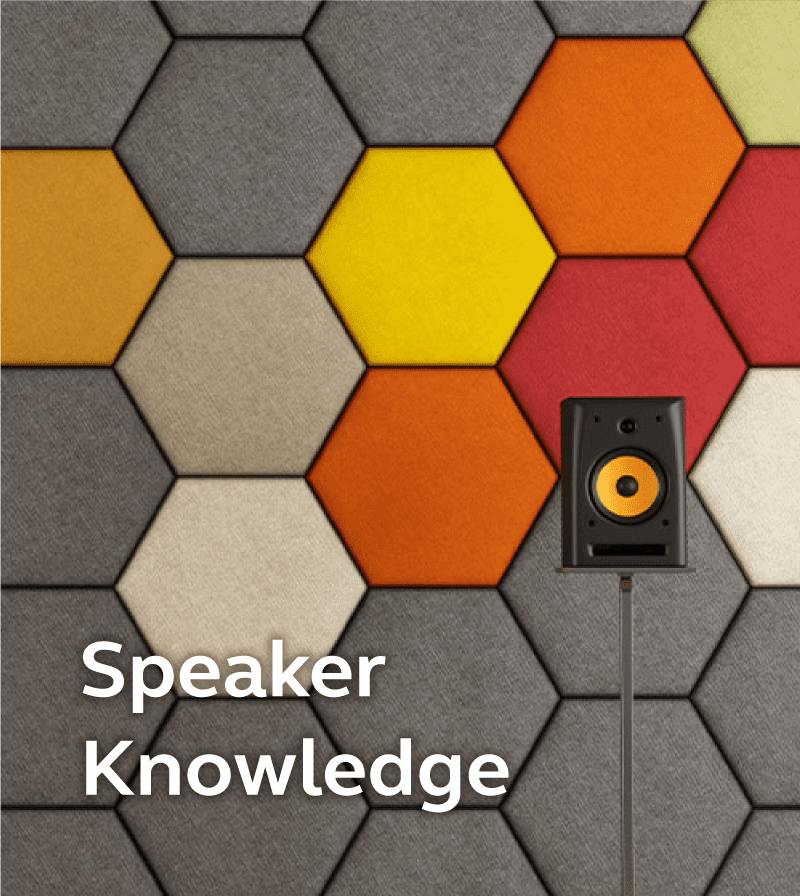Noisy neighborhoods, mechanical vibrations, unrelated conversations during teleconferences, and many other noises have degraded the quality of sound in real life. In this article we will introduce a noise reduction technology, Active Noise Control (ANC), which can be used as a solution for noise cancellation. ANC, as its name suggests, is an active noise control algorithm. ANC is a noise control technique that eliminates primary noise (unwanted noise) by generating “anti-noise” waves from a secondary source, according to the principle of superposition, A simple concept can be illustrated in Fig. 1 and Fig.2. The ANC technique is realized based on hardware combining adaptive signal processing and digital signal processing (DSP). How to apply it practically in more in-depth research needs to pay attention to some problems, such as secondary path effects, causality conditions, acoustic feedback problems, etc. Complex in-depth issues or allow can be discussed in the future in more detail.
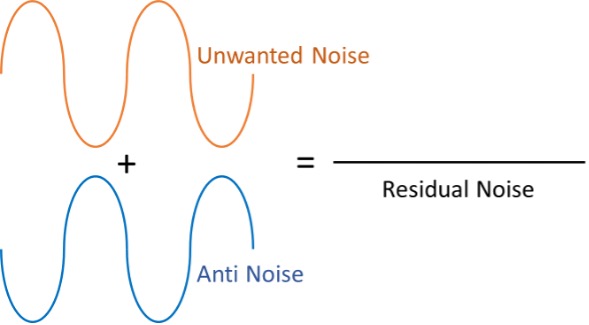
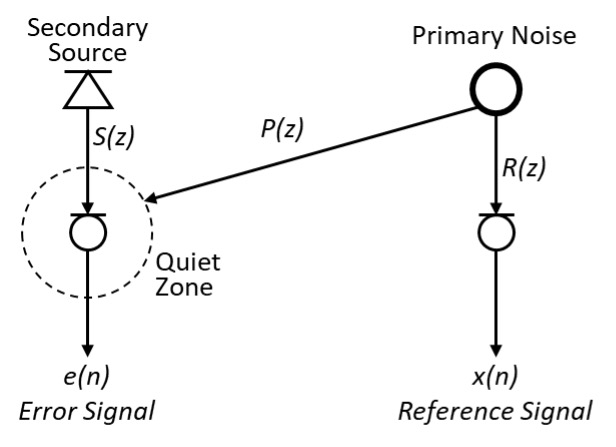
ANC technology is rapidly developing due to improvements in noise control technology and potential advantages in size, weight, bulk, and cost, coupled with that ANC specializes in noise control in the low frequency range. In contrast to traditional acoustic noise control, it employs passive techniques such as enclosures, barriers, and silencers to attenuate unwanted noise. These passive noise controls are valued for their high attenuation rates in the high frequency range; however, they are relatively large, costly, and ineffective in the low frequency range. Therefore, the technology of ANC acoustic algorithms has developed rapidly in recent years and has great potential for both industrial and commercial applications.
ANC is widely used different fields, such as automotive, industrial, transportation, and commercial applications, with excellent noise control performance. The following is a brief introduction to ANC applications.
A. Automotive:
When a car starts to drive with many noise sources, which automobile noise includes the engine, exhaust, air conditioning, road vibration, wind shear and other mechanical devices. The application of ANC can effectively make the passenger compartment of the car noise attenuation effect. Further, if more complex microphone/speaker array technology is introduced, quiet zoom sound field control can be achieved in some specific areas, but with the additional cost and computation.
B. Industrial:
Compared to ANC applied in automobiles, ANCs in industry are usually relatively simple. The main reason for this is that unwanted noise is mostly periodic and is easier to control than random noise. Narrowband ANCs are commonly used in fans, ventilation ducts, generators, blowers, compressors, pumps, wind tunnels, noise factories, and so on. It is worth mentioning that ANC has been used in noisy factories, in which employees who often work in noisy environments are prone to hearing loss, so reducing hearing loss in workplace injuries is also an advantage of ANC applications.
C. Transportation:
ANC is also one of the solutions to the severe environmental noise generated by airplanes, ships, yachts, helicopters, snowmobiles, motorcycles, internal combustion locomotives, and many other vehicles. In this type of application, ANC is one of the more challenging applications because of the need to suppress specific area noise in free field sound field control.
D. Commercial:
The most notable ANC application in commercial products must mention the power of noise-canceling headphones. When you are in a noisy MRT environment, noise-canceling headphones allow you to have a noise-free experience, no matter whether you’re watching a movie or playing a game, the experience will be better.
Types of ANC Systems
ANC can be categorized into broadband and narrowband ANC according to the targeted frequency range. The broadband ANC can be categorized into feedforward, feedback, and hybrid structure, mainly based on Filtered-x LMS (FxLMS) algorithm, which can deal with the noise sources with a wide bandwidth. While narrowband ANC is aimed at some single fundamental frequency and its harmonics. The third category of ANC is based on the modal matching method, and these algorithms are briefly described in the following.
A. Broadband ANC
The feedforward, feedback and hybrid structure of ANC are all based on the FxLMS algorithm, which employs two microphones (error and reference) and a loudspeaker (anti-speaker) to compute the optimal anti-noise signal by means of the Last Mean Square (LMS) algorithm. However, the traditional LMS must be modified in order to consider the secondary path effect. To ensure convergence of the algorithm, the input to the error correlator is filtered by the secondary path estimate S(z). This FxLMS algorithm is recommended in many literature discussions to compensate for the secondary path effects in ANC applications. Figs. 3-5 below show the framework of three basic broadband ANC systems, including feedforward, feedback, and hybrid ANC systems.


Figure 3. Architecture of Feedforward ANC System

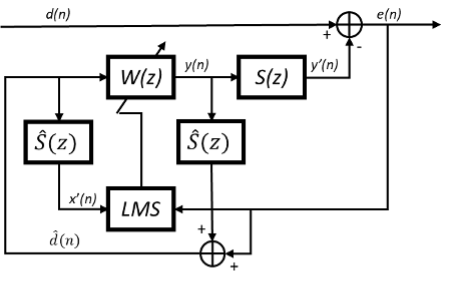
Figure 4. Architecture of Feedback ANC System

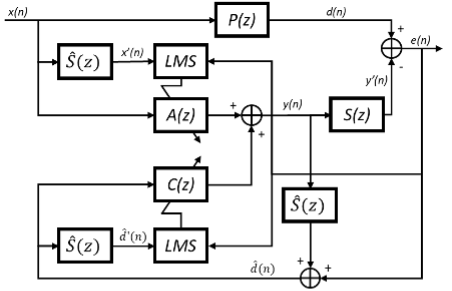
Figure 5. Architecture of Hybrid ANC System
B. Narrowband ANC
The major difference between Narrowband ANC and Broadband ANC is that narrowband ANC can be applied to periodic noise sources without considering the causality constraint. In addition, conventional narrowband ANC uses a non-acoustic sensor to detect the fundamental frequency of the noise source, followed by an adaptive filter to generate anti-noise for the purpose of noise reduction. The following is a description of single-frequency and multi-frequency ANC.
In industrial applications, noise sources such as engines, motors and fans often generate a single-frequency wave with its harmonic vibration noise source. The single-frequency ANC utilizes an accelerometer to obtain the fundamental frequency f_0 of the vibration, followed by a signal generator to produce a sine-wave as the input signal. The algorithm also adopts an FxLMS architecture as in Fig. 6.
Multi-frequency ANC is an application where the noise source contains multiple single frequency situations. The concept and structure is similar to single-frequency ANC, the structure is illustrated in Fig. 7.
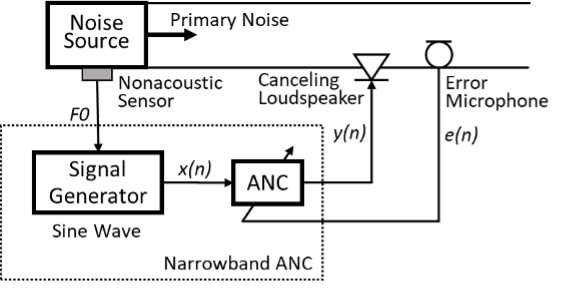

Common ANC Problem
A. Secondary Path Effect
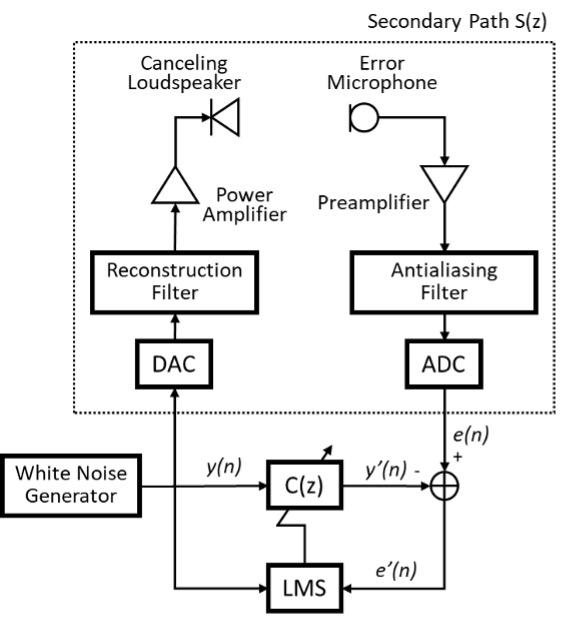
Taking the feed-forward structure ANC in Fig. 1 as an example. The noise control in error microphone is the result of the noise source passing through the primary path from the reference microphone to the error microphone. Since anti-noise is reference microphone receives the noise source, after DSP and hardware processing and the sound is output by the anti-speaker, then reaches the error microphone results. Therefore, when generating anti-noise, it is necessary to compensate for the effect between the anti-speaker and the error microphone. The secondary path effect is not just that, which includes the digital-to-analog (D/A) converter, reconstruction filter, power amplifier, loudspeaker, acoustic path from loudspeaker to error microphone, error microphone, preamplifier, antialiasing filter, and analog-to-digital (A/D) converter, as shown in Fig. 8.
B. Causality Condition/ Constraint
In the implementation of real-time ANC, the causality constraint must also be considered, or even if the noise control effect is good, it will be futile. The electrical delay refers to the latency caused by DSP and hardware processing, and the acoustic delay is the latency caused by the transmission of sound in space. These two delays are important reference factors for evaluating causality constraint. For example, the distance between the reference microphone and the error microphone is 10 cm, the distance between the anti-speaker and the error microphone is 5 cm, and the speed of sound is 343 m/s. Then, when the sound starts from the signal received by the reference microphone, the DSP and hardware processing must complete and allocate the anti-noise signal within 3ms (≒0.1/343) to avoid the causality constraint and ensure the performance of ANC. To avoid the causality constraint, it can be considered to use a narrowband ANC. During the adaptive process, only the gain and phase are adapted. To summarize the above, ANC has higher hardware requirements.
C. Acoustic Feedback Problem/ Neutralization/ Feedback Effect
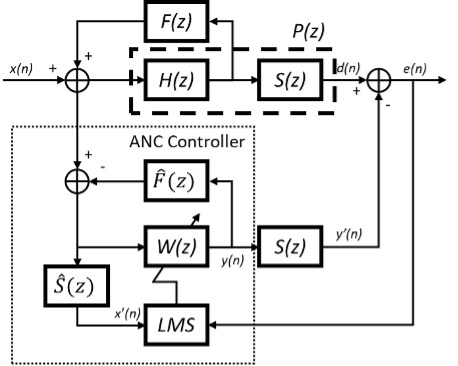
Acoustic feedback problem is a critical problem that affects the performance of the ANC. When the anti-speaker plays anti-noise through to the error microphone without proper sound isolation, the anti-noise will also be transmitted to the reference microphone to pollute the input signal, which will cause the ANC cannot be converged, resulting in a degradation of performance. The simplest way to solve the feedback problem is to use a separate feedback cancellation or “neutralization” filter in the controller, which is the same technique used in acoustic echo cancellation (AEC), and can be referenced as shown in Fig. 9.
Enhanced Features of Active Noise Control in Modern Vehicles
Modern vehicles are incorporating advanced Active Noise Control (ANC) features to enhance the driving experience. These enhanced features include multi-zone ANC, which allows for different noise control settings in various sections of the vehicle, providing personalized comfort for each passenger. Additionally, adaptive ANC systems can automatically adjust to changing noise environments, such as varying road surfaces or wind conditions, ensuring consistent noise reduction. Another innovation is the integration of ANC with infotainment systems, allowing for seamless switching between music playback and noise cancellation modes. These features not only improve the overall acoustic environment but also contribute to a quieter, more enjoyable ride.
Practical Applications and Benefits
The practical applications of ANC extend across various industries, offering significant benefits. In the automotive industry, ANC enhances passenger comfort by reducing engine and road noise. In industrial settings, ANC is used to protect workers’ hearing by mitigating the noise from machinery and equipment. In the transportation sector, ANC improves the acoustic environment in airplanes, ships, and trains, contributing to a more pleasant travel experience. Commercially, ANC technology is widely adopted in consumer electronics, such as noise-canceling headphones, which provide users with a peaceful auditory experience in noisy environments. The benefits of ANC include improved comfort, health, and productivity, as well as enhanced product performance and user satisfaction.
Conclusion
Summarizing the above introduction of ANC, which is widely used in automotive, industrial, transportation, and commercial applications, with excellent noise control performance. Based on the type of ANC, it can be simply divided into broadband and narrowband ANC, which can be applied to different noise sources and scenarios. In the real-time ANC, there are several important considerations, including secondary path effect, causality constraint and acoustic feedback problem. This paper is just a simple explanation of the application and implementation of ANC, and aims to be helpful for readers entering the field of acoustics.
References
- [1] K. H. Liu, L. C. Chen, T. Ma, G. Bellala, and K. Chu, “Active Noise Cancellation Project,” EECS 452, Winter 2008.
- [2] S. M. Kuo and D. R. Morgan, “Active noise control: a tutorial review,” in Proceedings of the IEEE, vol. 87, no. 6, pp. 943-973, June 1999.
- [3] KUO, Sen M., et al. Design of active noise control systems with the TMS320 family. Texas Instruments, 1996.
- [4] 李昆哲與林仲廉,“應用主動式噪音控制技術於勞工作業空間降噪效能之探討",勞動部勞動及職業安全衛生研究所,2018。


